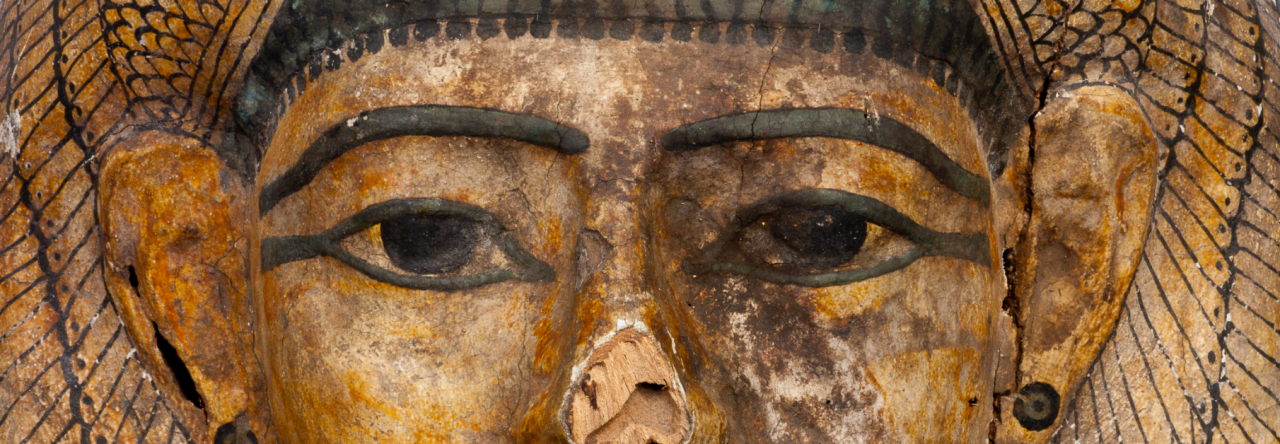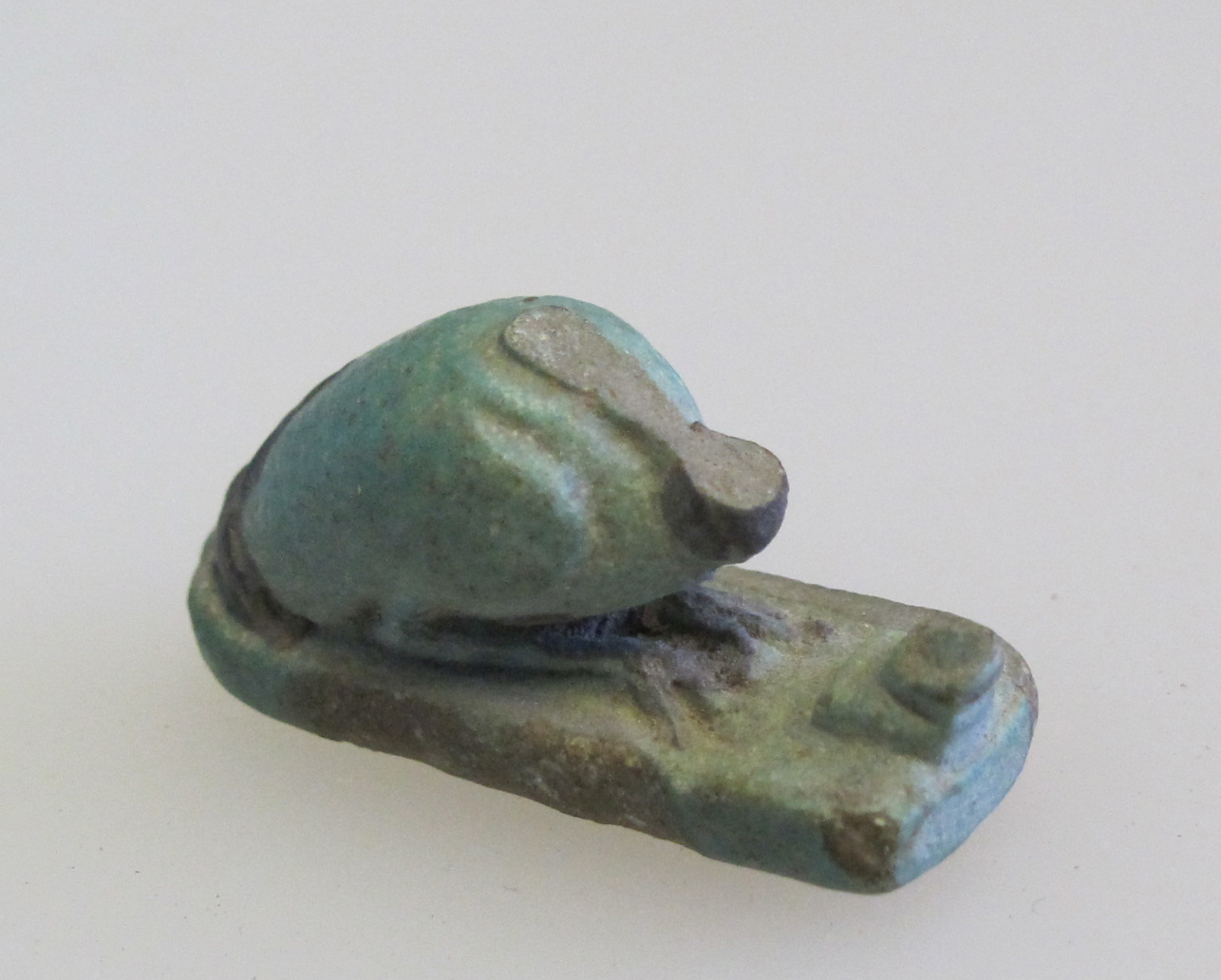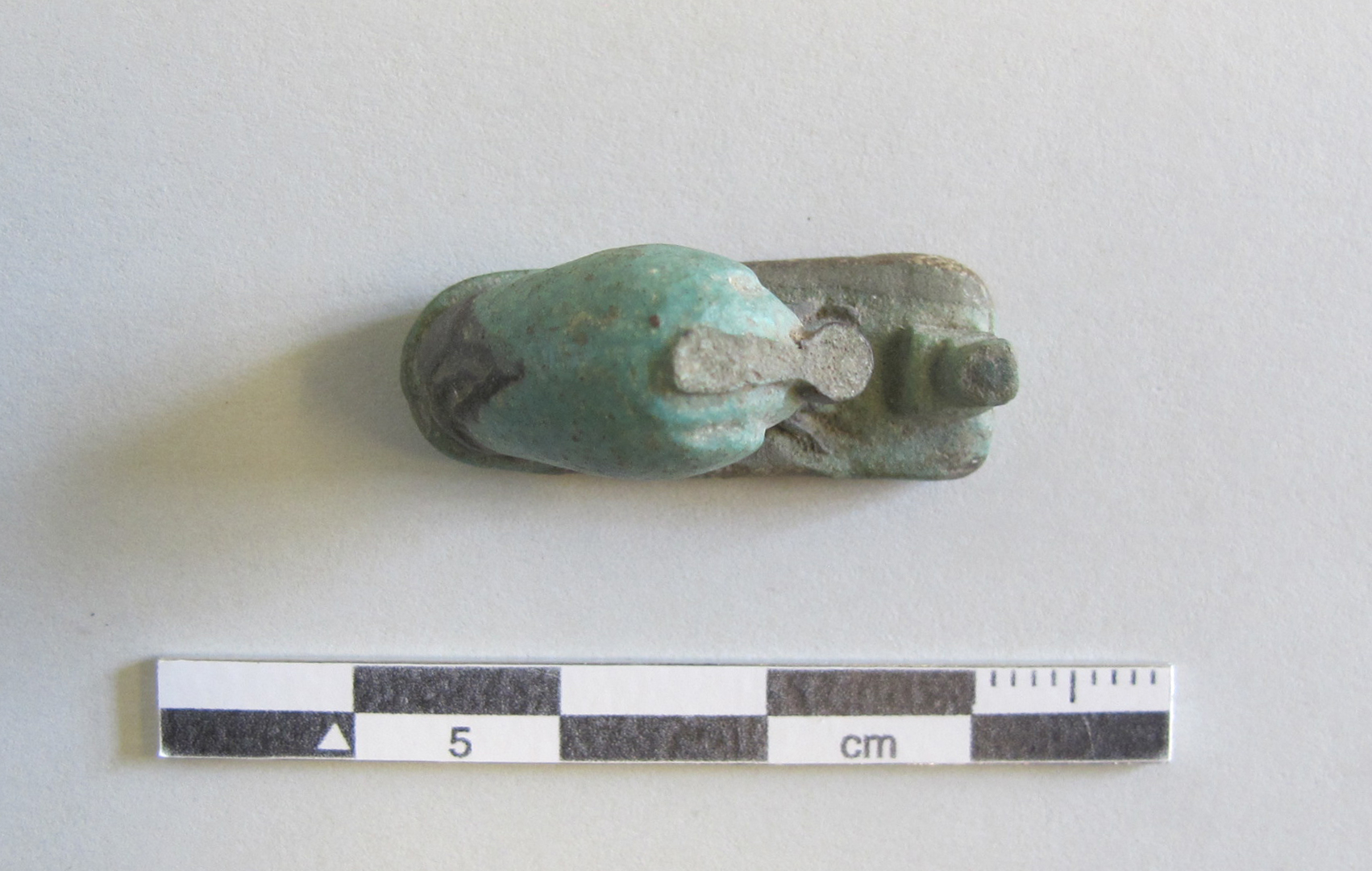For a 3D model made by the Virtual Curation Lab at Virginia Commonwealth University, see https://skfb.ly/ors6C
AWG0000.01.01 (R6035)
Egyptian, Late period (727-525 BCE)
Material: Faience
Technique: Self-glazing “efflorescence method”
Weight: 4g
Dimensions: 2.5cm long, 1cm wide, 1.1cm high
Condition: Poor condition - head broken off at the base of the neck and ostrich feather
Provenance: Unknown, said to be from Egypt
Source/donor: Unknown
Date of acquisition: Prior to 1979; probably part of the Richmond College Museum collection
Other notes: The inventory number beginning with R suggests that it was part of the Richmond College Museum collection. Other R-numbered items were displayed in the Biology Museum in Maryland Hall beginning in 1932
Research by: Madison Phillips, ’23, Caroline Cobert, ’12
Detailed description of form/shape:
A small amulet of a large bird with long legs sitting on a thin, rectangular platform, missing head, neck, beak, and ostrich (or ma’at) feather, which, based on comparanda, would have connected the beak of the bird to the base where a small, circular nub can be seen.
Comparanda:
For a similar, complete amulet, see ibis amulet of the same material and style at the Brooklyn Museum. Another example with a more similar foot structure can be found at the John-Hopkins Archaeological Museum.
Discussion:
This majestic ibis sits with its legs relaxed underneath its body, sitting low to the ground. Traveling up the figure and to the base of the neck, the body is lightly detailed with feathers and indentations around the legs. The amulet is broken at the base of the bird’s neck, so we are missing its head with a loop at the top of the neck for a cord to be threaded through and, in its beak, an ostrich feather, symbol of truth and the goddess Ma’at. The base of the feather can be seen broken off at the flat bottom of the amulet. This particular amulet likely would have been used during the Late Period, or between 727 to 525 BCE, based on amulets of similar style and composition.
The Ibis bird was representative of the god Thoth, the god of mathematics, sciences, and magic, and was a messenger and recorder of the deities. As such, he helped funerary deities and was responsible for recording the outcome of the “weighing of the heart” ceremony. In this ceremony, a person’s heart, otherwise known to be their spirit, would be weighed against the ma’at feather of truth. If the scales balanced, the deceased was able to pass into the afterlife; if the heart was heavier, the person could not pass. This amulet may have been placed with the mummified remains of the dead in hopes that it protected and aided them at their final judgment.
Bibliography:
Andrews, C. 1994. Amulets of Ancient Egypt. Austin: University of Texas Press.
“Human before an Ibis Amulet.” Brooklyn Museum. Accessed October 16, 2021. https://www.brooklynmuseum.org/opencollection/objects/117888.
Riccardelli, Carolyn. 2017. “Egyptian Faience: Technology and Production.” In Heilbrunn Timeline of Art History. New York: The Metropolitan Museum of Art. https://www.metmuseum.org/toah/hd/egfc/hd_egfc.htm.
Rosicrucian Egyptian Museum. “Thoth.” Deities in Ancient Egypt, 2021. https://egyptianmuseum.org/deities-thoth.


